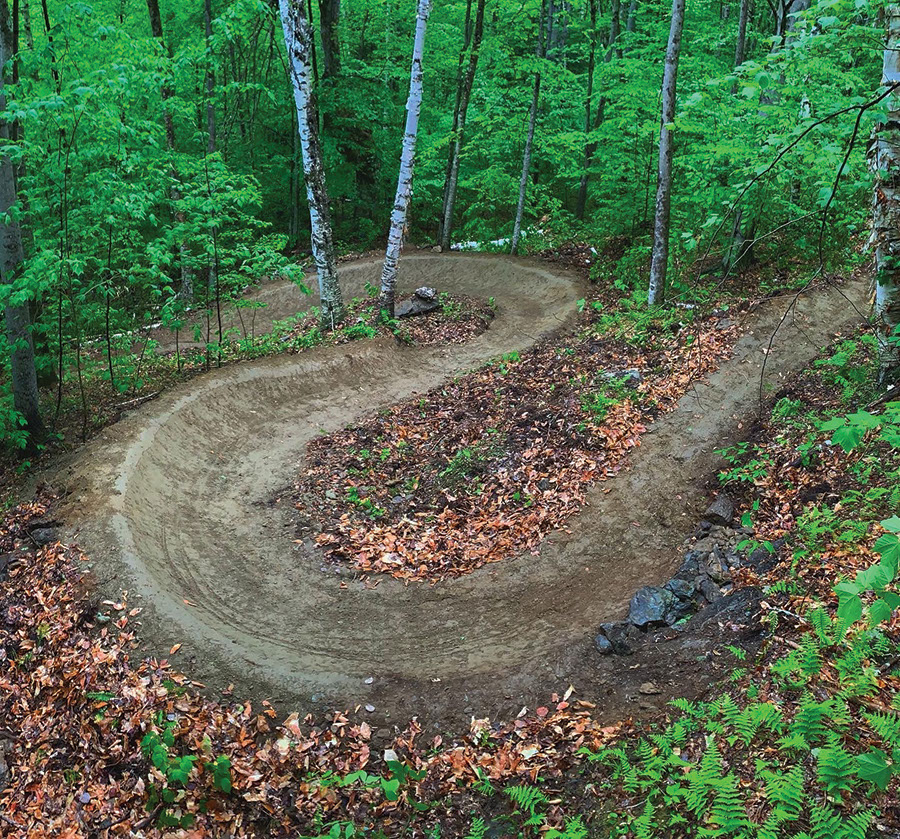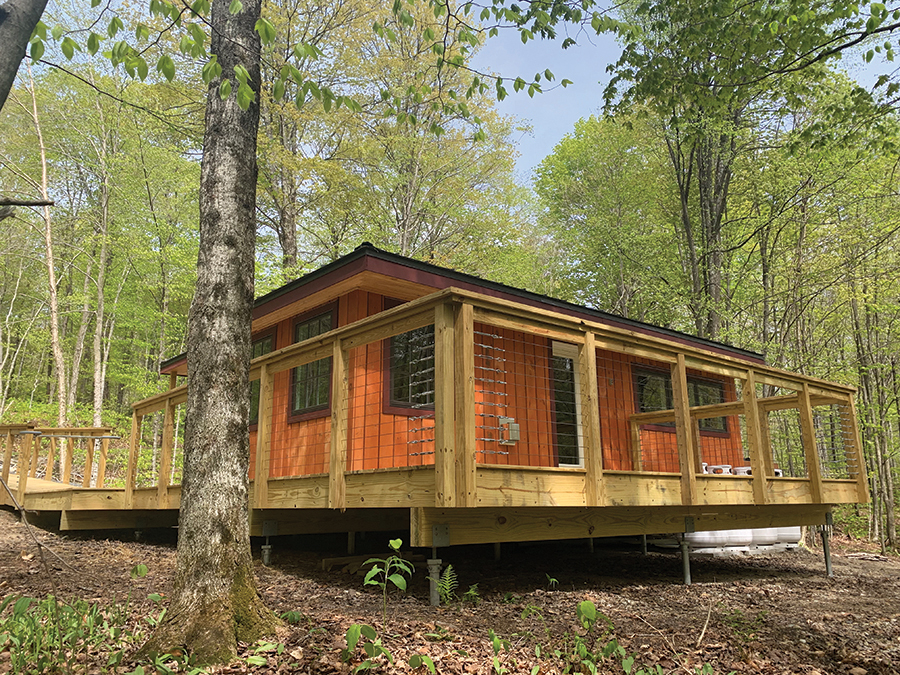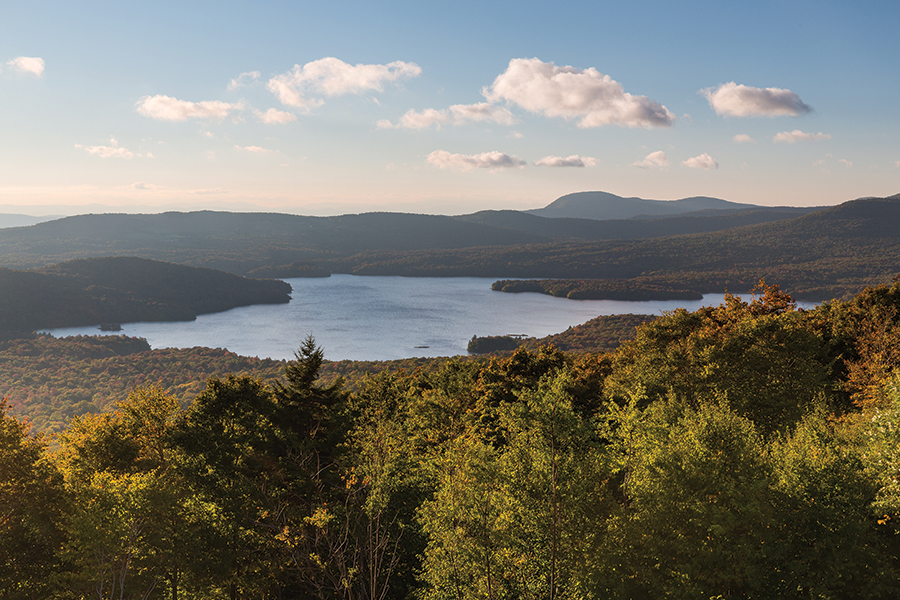Green Mountain Gliding
This article first appeared in the August/September 2021 issue of Adventure Cyclist magazine.
A few years ago, while sipping post-ride beers in a parking lot, some friends involved in Vermont’s mountain bike community bantered about how to create bigger, longer singletrack rides in the Green Mountain State, and the seed for the Velomont Trail was planted.
Now that seed has sprouted. The Velomont Collective broke trail this summer on the proposed Velomont Trail, which, with a little luck and a lot of work, will be a multiuse Canada-to-Massachusetts trail composed mostly of singletrack and built for mountain biking, to be completed over the next seven years. The vision is to connect existing trail networks throughout the state in a continuous corridor that passes through more than 30 Vermont communities, with 30 to 45 backcountry huts along the way owned and managed by the Vermont Huts Association.
From Bennington to Montgomery, regional chapters of the Vermont Mountain Bike Association (VMBA) maintain twisty clusters of trails, but there’s little or no connectivity among them. A fully realized Velomont Trail will provide the opportunity for both Vermonters and visitors to do multiday rides or pedal the length of the state, all on trails.
“Velomont represents the physical connective tissue of Vermont mountain biking and VMBA,” said Nick Bennett, VMBA’s executive director. “With more than 20 of VMBA’s 27 mountain bike chapters involved, it puts Vermont mountain biking on the map, providing a European-style opportunity to ride from village to village. That’s not just a cool way to connect towns — the town-to-trail economic potential is huge.”

Velomont is as much about creating more opportunities for immersive nature experiences, health and wellness, and contributing to Vermont’s economy as it is about becoming the East Coast’s most epic trail network.
“By building Velomont, we’re connecting rural communities to trailheads,” said RJ Thompson, Vermont Huts’ executive director. “Velomont will weave in and out of the forest and Vermont communities, giving Vermonters direct access to the trail and the opportunity to eat, drink, and stay in a Vermont village, and to spend a night in a backcountry hut.”
More than 84 percent of land in Vermont is private. Thanks to landowner-friendly recreational use statutes — such as Act 250, Vermont’s land use and development law — landowners have been key partners in developing mountain bike and multiuse trail networks throughout the state. Velomont’s completion depends on the goodwill of private landowners as well as partnerships with state and federal foresters who manage Vermont’s public lands.
“Velomont is a bottom-up, not a top-down initiative,” said Angus McCusker, Velomont’s volunteer executive director. “The people who manage local trails know the local landowners. That makes our chance for success much greater. The collective’s biggest wins so far are the partnerships forming behind a statewide vision.”

One of those partnerships is with the U.S. Forest Service (USFS). “As public land managers, it is our role to balance public demand, and the opportunity it presents to educate visitors and to foster future generations of land stewards, with the potential for natural resource and social impacts,” said Holly Knox, the USFS recreation program manager for the Green Mountain and Finger Lakes National Forests. “Through our partnerships and projects like Velomont, we can diversify what we offer and connect to a broader audience of people to share in this land stewardship ethic.”
Vermonters are excited. Trail builder Tom Lepesqueur, who is building the first section of Velomont-specific trail, seven miles of singletrack from Rochester to Pittsfield, said that digging the first section of trail is “surreal.”
“This has been in the works for a long time,” he said. “It’s going to be huge for any town it touches.”
Native Vermonter, family doctor, and Burlington resident Alex Graham is equally excited. “As a nature lover and a recreational mountain biker who started as a bicycle tourist and road rider, I am thrilled by the opportunity to see more of my home state from the seat of a bike,” said Graham. “As a family physician, I can confirm that the healthiest kids are those who ride bikes. To more deeply ingrain mountain biking into the culture will only improve our health as a state.”
Lindsay DesLauriers, president of Bolton Valley Resort, which offers lift-served mountain biking in the summer, said she’s excited to partner with Velomont.
“The connectivity will be awesome,” said DesLauriers. “It was risky for Bolton to be a winter-only resort. Mountain biking shores up our business and gives us security, and the idea of being a bike park stop in a state-wide network is appealing.”
Trail connectivity also creates opportunities for conservation, as did Vermont’s other two cross-state trails, the Long Trail (hiking) and the Catamount Trail (Nordic skiing).

Kate Wanner, senior project manager for the Trust for Public Land, confirmed. “Our efforts to permanently conserve the largest private inholding in Green Mountain National Forest will be leveraged by the new proposed hut and trail infrastructure,” she said. “Throughout Vermont, we’ve seen how public trail networks contribute to healthy and vibrant communities and improve quality of life for all who use them.”
The Collective is taking a measured approach, crossing t’s and dotting i’s, working through permitting and adhering to the Act 250 law.
“We’re doing our due diligence planning the trail to be sensitive to natural resources, wildlife, ecology, and communities,” said Caitrin Maloney, Velomont Collective’s board president. “We’re working with communities to make sure the trail meets their vision. We want Velomont to recognize community, conservation, and ecological priorities to minimize the trails’ impacts and maximize its benefits.”
Building an end-to-end trail in a state with so much private land is ambitious. So is constructing 30 to 45 huts along the way. But, as McCusker said, “This harebrained idea is happening.”

